#joseph c. wright
Explore tagged Tumblr posts
Photo

Joseph Wright of Derby (English,1734-1797)
Dovedale by Moonlight, c.1785
Oil on canvas
470 notes
·
View notes
Text

'old man and death' by joseph wright of derby, c. 1774 in spectacular bodies: the art + science of the human body from leonardo to now - martin kemp + marina wallace (2000)
54 notes
·
View notes
Photo









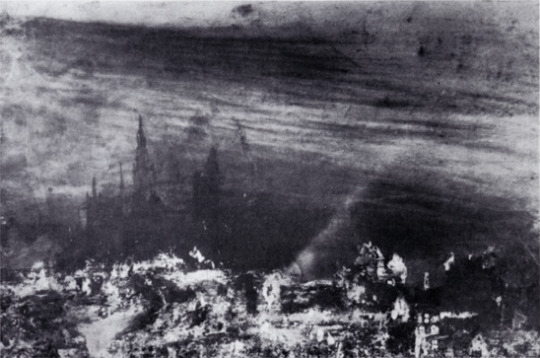
c!techno on doomsday.
part one of two of my gift for @echidna-cosmos as part of the @technoblade-gift-exchange !!
vesuvius in eruption - joseph wright // thomasin - claire c. holland // ozymandias - sad-ist // adonis (tr. khaled mattawa) // forest fire - mark tobey // i never told you what i do for a living - my chemical romance // ceremony - fernando de szyszlo // unknown // ozymandias - sad-ist // the woman poet - gertrud kolmar (tr. henry a. smith) // the dead city - victor hugo
#technoblade#dream smp#doomsday#c!techno#c!technoblade#dsmpblr#bladeblr#apologies for the lateness!!#web weaving
276 notes
·
View notes
Text
OFMD Stede Bonnet as a Macaroni: Wealth, Gender and Sexuality in the 18th Century Fashion World
Historical Inaccuracy in Our Flag Means Death? Never!
Historical inaccuracy! I hear you cry. A Macaroni in 1717!?! It is true macaroni fashion was really a late-18th century fashion trend, seemingly reaching its peak in the 1770s. However Our Flag Means Death is nothing if not historically inaccurate. Stede’s costumes seem to take inspiration from across the 18th century rather than worrying about what would have actually been worn in 1717.
Early 18th century suits tended to have round necklines, loose-fitting sleeves with wide cuffs, long waistcoats that stoped just above the knee, and coats with full skirts just a little longer that the waistcoat.

[Left: Matthew Prior, oil on canvas, c. 1713-1714, by Alexis-Simon Belle, photo credit: St John's College, University of Cambridge, via Art UK.
Middle: Matthew Hutton of Newnham, Hertfordshire, oil on canvas, c. 1715, by Johannes Verelst, photo credit: National Trust Images, via Art UK.
Right: William Leathes, Ambassador Brussels, oil on canvas, c. 1710-1711, by Herman van der Myn, photo credit: Colchester and Ipswich Museums Service: Ipswich Borough Council Collection, via Art UK.]
As the century continued we get standing collars and turned down collars but round necklines were still around as well, sleeves got tighter with smaller cuffs, the waistcoats got shorter and the coats lost their skirts.
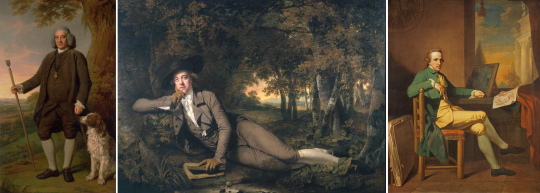
[Left: Thomas ‘Sense’ Browne, oil on canvas, c. 1775, by Nathaniel Dance-Holland, photo credit: Yale Center for British Art, via Art UK.
Middle: Sir Brooke Boothby, oil on canvas, c. 1781, by Joseph Wright of Derby, photo credit: Tate, via Art UK.
Right: David Allan, oil on canvas, c. 1770, by David Allan, photo credit: Royal Scottish Academy/National Galleries of Scotland (Antonia Reeve), via Art UK.]
Stede’s collars are inconstant some are rounded but others are turned down and Ed’s purple suit has a standing collar. Many of Stede’s coats have wide cuffs, but most have little skirt to them. His teal suit from the pilot has a bit of a skirt but its paired with a short waistcoat.

Most of Stede’s waistcoats are short with the exception of his suits from both the wedding portrait with Mary and the the family portrait. Both suits are very straight giving him a boxy appearance and are pretty different from most of the suits we see him in.

All in all I don’t think they were aiming for historically realistic clothes but with the collars, short waistcoats, and lack of skirts I get more of a late-18th century vibe.
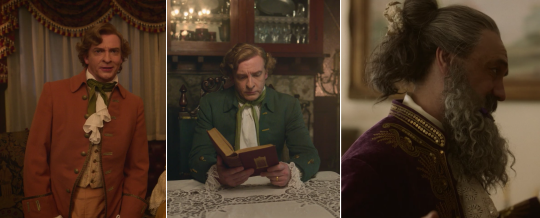
So what was a Macaroni?
A Classical Dictionary of the Vulgar Tongue (1785), defined macaroni as follows:
An Italian paste made of flour and eggs; also a fop, which name arose from a club, called the maccaroni club, instituted by some of the most; dressy travelled gentlemen about town, who led the fashions, whence a man foppishly dressed, was supposed a member of that club, and by contraction stiled a maccaroni.
The macaroni club was said to have comprised of young men who had gained a taste for French and Italian textiles on their Grand Tour (a traditional trip taken tough Europe by upper class men when they came of age). The earliest reference to the club is from a letter from Horace Walpole to Lord Hertford on the 6th Feb 1764:
at the Maccaroni Club (which is composed of all the travelled young men who wear long curls and spying-glasses),
In his book Pretty Gentleman: Macaroni Men and the Eighteenth-Century Fashion World Peter McNeil suggest the club was actually Almack’s. Almack’s was a private club at 50 Pall Mall that was attended by prominent Whigs including Sheridan, Fox and the Price of Wales. (p52) While the name may have originated from the men at Almack’s it was soon used to describe any man who followed the associated fashion trends.
So what were these trends?
Hair
“Still lower let us fall for once, and pop
Our heads into a modern Barber’s shop;
What the result? or what we behold there?
A set of Macaronies weaving hair.”
~ The Macaroni by Robert Hitchcock
Probably the most iconic aspect of macaroni fashion was the hair. “It was the macaroni attention to wigs that caused most consternation” explains Peter McNeil. The macaroni hair “matched the towering heights of the female coiffure, with a tall toupee cresting at the centre front. The wig generally had a long tail at the neck (’queue’), which when folded double was called the ‘cadogan’, all of which required regular dressing with pomade and powder, sometimes in the colours of pink, green or red.” (p45)
The height of the macaroni hair was a point of particular fascination in macaroni caricature exaggerating it beyond what the macaroni were probably actually wearing. Compare below Tom’s hair in the satirical print What is this my son Tom to the self portrait of Richard Cosway, who was satirised by Mary Darly as “The Miniature Macaroni” (a reference both to his height and his career as a miniature painter).
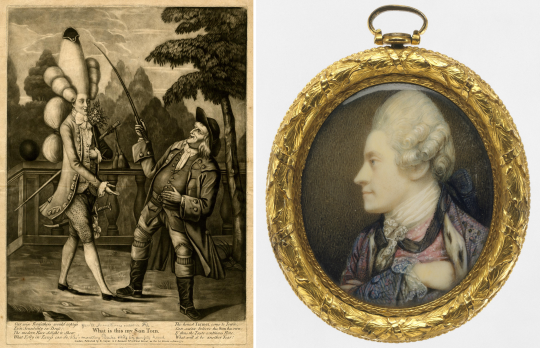
[Left: What is this my son Tom, print, c. 1774, published by Sayer & Bennett, via The British Museum.
Right: Self-Portrait, Ivory, c. 1770–75, by Richard Cosway, via The Met.]
The way Stede usually wears is hair is not particularly macaroni nor particularly 18th century for that matter. The exception to this is his wig from The Best Revenge Is Dressing Well though even this doesn’t have the iconic macaroni hight.

Interestingly both Stede and Ed are wearing flowers in their hair. While there are certainly depictions of women with flowers in there hair I’m not aware of this being a trend in mens fashion at all. However macaroni were known for wearing large nosegays.
While the tall hair was certainly iconic not all macaroni wore their hair tall. Joseph Banks, who was satirised as “The Fly Catching Macaroni” by Matthew Darly, is depicted in his portrait with a fairly typical 18th century hairstyle. Its not the hair alone that makes a macaroni, it was just one aspect of the fashion.
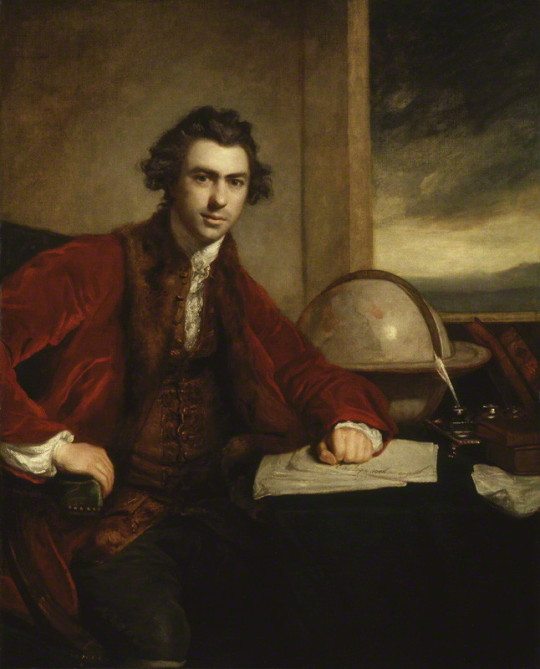
[Sir Joseph Banks, oil on canvas, c. 1771-1773, by Sir Joshua Reynolds, via Wikimedia.]
Suit
“If I went to Almack’s and decked out my wrinkles in pink and green like Lord Harrington, I might still be in vogue.” ~ Horace Walpole to Lord Hertford, 25 Nov 1764
Menswear of the period consisted of the same basic elements; shirt, stockings, breeches, waistcoat and coat. What differentiated the macaroni from others was the fabric, cut, colour and trimmings of the suit. “At a time when English dress generally consisted of more sober cuts and the use of monochrome broadcloth,” explains Peter McNeil “macaronism emphasised the effects associated with French, Spanish and Italian textiles and trimmings”. Popular amongst macaroni were brocaded and embroidered silks and velvets, sometimes further embellished with metallic sequins, simulated gemstones and raised metallic threads. Popular colours included pastels, pea-green, pink, red and deep orange. (McNeil, p30-32)
Far from wearing “monochrome broadcloth” Stede likes a “fine fabric” and dresses in a range of colours, we see him in teal, pink, purple, green, white, red, peach &c.
Tightly cut French style suits known as habit à la française were popular with macaroni. (McNeil, p14) Stede’s suits vary somewhat in cut but some are very French. The peach suit Stede wears in We Gull Way Back particularly has a very macaroni feel to me. Compare it to the English suit (left) and the French suit (right).

From the back you can see the English suit has more of a skirt to it.

Both Stede’s suit and the French suit are somewhat plain but have been paired with a floral embroidered waistcoat, while the English suit has a matching plain black waistcoat.
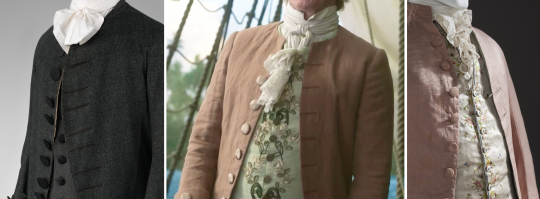
[Left: English suit, wool, silk, c. 1755–65, via The Met, number: 2009.300.916a, b.
Right: French suit, Silk plain weave (faille), c. 1785, via LACMA, number: M.2007.211.47a-b.]
Fabric covered button’s were common in the 18th century, you can see them on both the French and English coats above. In contrast Stede wears a lot of metal buttons. Steel buttons were popular amongst macaroni, a trend that was satirised in Steel Buttons/Coup de Bouton.

[Steel Buttons/Coup de Bouton, print, c. 1777, by William Humphrey, via The British Museum.]
Pumps and Parasols
“Maccaronies who trip in pumps and with Parasols over their heads” ~ Mrs Montagu
High heels had been popular amongst men during the 17th century. The Royal Collection Trust explains:
In the first half of the 17th century, high heeled shoes for men took the form of heeled riding or Cavalier boots as worn by Charles I. As the wearing of heels filtered into the lower ranks of society, the aristocracy responded by dramatically increasing the height of their shoes. High heels were impractical for undertaking manual labour or walking long distances, and therefore announced the privileged status of the wearer.
(Royal Collection Trust, High Heels Fit for a King)
In 17th century France Louis XIV popularised red-heels by turning them into a symbol of political privilege, which in turn spread the fashion to England. But with the sobering of menswear in England around the turn of the century the high heel and the red-heels went out of fashion. (see Bata Shoe Museum Toronto, Standing TALL: The Curious History of Men in Heels)
The high heel had a bit of a resurgence in the 1770s with macaroni fashion. The Natural History of a Macaroni snipes that the macaroni’s “natural hight is somewhat inferior to he ordinary size of men, through by the artificial hight of their heels, they in general reach that standard”. (Walker’s Hibernian Magazine, July 1777, p458)
Red-heels were reintroduced to England by young men returning from their Grand Tours. A young Charles James Fox (satirised by Mathew Darly as “the Original Macaroni”) wore such French style red-heeled shoes. The Monthly Magazine recalls a young Fox as a “celebrated “beau garçon” with “his chapeau bras, his red-heeled shoes, and his blue hair-powder.” (Oct 1806) and The Life of the Right Honorable, Charles James Fox recalls him in his “suit of Paris-cut velvet, most fancifully embroidered, and bedecked with a large bouquet; a head-dress cemented into every variety of shape; a little silk hat, curiously ornamented; and a pair of French shoes, with red-heels;” (p18) And in Recollections of the Life of the Late Right Honorable Charles James Fox B.C. Walpole recalls him as “one of the greatest beaus in England,” who “indulged in all the fashionable elegance of attire, and vied, in point of red heels and Paris-cut velvet with the most dashing young men of the age. Indeed there are many still living who recollect Beau Fox strutting up and down St. Jame’s-street, in a suit of French embroidery, a little silk hat, red-heeled shoes, and a bouquet nearly large enough for a may-pole.” (p24)
Compare the French style red-heeled shoes of Louis XIV to Stede’s red-heeled shoes.

[Left: detail of Louis XIV, oil on canvas, c. 1701, by Hyacinthe Rigaud, via Wikimedia.]
However most macaroni were depicted wearing the more standard late 18th century low-heeled bucked shoes. Where they distinguished themselves was the size and decoration of the buckles. “Such buckles could be set with pate (lead glass) or ‘Bristol stones’ (chips of quartz), or diamonds if you were very rich.” Explains peter McNeil, “The new macaroni fashion was for huge silver or plated Artois shoe buckles which the Mourning Post claimed weighed three to eleven ounces.” (p90)
While certainly not as iconic has his heels Stede also wears these sorts of shoes. Compare below the shoes from a macaroni caricature to Ed wearing Stede’s shoes (I couldn’t get a good shot of Stede wearing them).

[Left: detail of How d'ye like me, print, c. 1772, published by: Carington Bowles, via The British Museum.]
“A great many jewelled accessories accompanied the macaroni look”, writes Peter McNeil, “They included hanger swords, very long canes, clubs, spying glasses and snuff-boxes.” (p68) Tragically we don’t see Stede with a fashionable dress sword or a cane but we do see him with another accessory popular amongst macaroni; a parasol.
Popular in France parasols/umbrellas were adopted by the macaroni. They were popular amongst both men and woman in France but in England they had a feminine connotation. (McNeil, p129) In the 1780s as umbrellas became more popular amongst men there was a cultural pushback to the perceived gender transgression. On the 16th of August 1780 the Morning Post complains of of the “canopy of umbrellas” bemoaning that “the effeminacy of the men, inclines them to adopt this necessary appendage of female convenience”. On the the 4th Oct, 1784, the Morning Chronicle published a letter complaining of “that vile foppish practice of sheltering under a umbrella”. The author of this tirade writes that while “the ladies should be allowed to secure their beauty and persons from the heat of the sun, or the inclemency of the weather,” because “it is natural, and has a striking effect”, that “to see a great lubberly cit, bounce from his shop, with a coat, hat, and wig that are not together worth one groat,” sheltering “from the influence of the solar beam” was “intolerable.” However:
The macaroni being of the doubtful gender, may in part claim a feminine right; his dress is too delicate to bear an heavy shower, perhaps his person is so too; but a coach, if a clean one is to be found would serve his purpose much better, as there would be less likelihood of his being washed away into the kennel, which he deserves to be kicked into for his d-----d affectation.

Wealth
Born from rich young men returning from their tours with a taste for French and Italian textiles macaroni fashion was expensive. Certainly a working class man would not be able to afford Stede’s wardrobe. Both the sheer amount of clothes he has as well has the fabrics those clothes are made of are indications of wealth. However to say that Stede’s wardrobe is only an indication of wealth would be missing part of picture.
Most rich upper class English men (including colonial) wore plain monochrome suits. Even amongst the gentry macaroni fashion was not the norm. Compare bellow George Washington (left) who was a wealthy planation owner, but notably not a macaroni, to Richard Cosway (right) who was a famous macaroni.

[Left: George Washington, oil on canvas, c. 1796, by Gilbert Stuart, via Pennsylvania Academy of the Fine Arts.
Right: Detail of The Academicians of the Royal Academy, oil on canvas, c. 1771-72, by Johan Zoffany, via The Royal Collection Trust.]
In spite of the expense macaroni fashion was not exclusive to the upper classes. “Macaroni dress was not restricted to members of the aristocracy and gentry,” writes McNeil, “but included men of the artisan, artist, and upper servant classes, who wore versions of this visually lavish clothing with a distinctive cut and shorter jackets. Wealthier shopkeepers and entrepreneurs also sometimes wore such lavish clothing, particularly those associated with the luxury trades, such as mercers and upholsterers -” (p14)
It was possible to copy certain aspects of macaroni fashion on a cheeper budget. The hairstyle in particular was achievable without braking the bank. And there were ways to replicate the effects of certain expensive fashion trends for cheeper prices. For example patterns could be printed rather than embroidered.

[Left: printed waistcoat, cotton, c. 1770–90, via The Met, number: 35.142.
Right: embroidered waistcoat, silk, c. 1780–89, via The Met, number: 2009.300.2908.]
The Town and Country Magazine complains “we now have Macaronies of every denomination, from the colonel of the Train’s-Bands down to the errand-boy.” (McNeil, p169) The Morining Post mocks macaronies that couldn't financially keep up with the trends:
The macaronies of a certain class are under peculiar circumstances of distress, occasioned by the fashion, now so prevalent, of wearing enormous shoe-buckles; and we are well assured that the manufactory of plated ware was never known to be in so flourishing a situation.
(14 Jan, 1777)
In 18th century England, class was about more than just how much money you had. It was about pedigree. “English society was particularly alert to those whom it felt were using clothes to achieve a social status they did not merit” explains McNeil. Richard Cosway was a famous macaroni from modest background. Born to a Devonshire headmaster he was sent to London to study painting at 12. He became a very successful miniature painter and grew rich from the patronage of the Prince of Wales (later George IV) and Whig circles. In Nollekens and his Times J.T. Smith writes of Cosway:
He rose from one of the dirtiest boys, to one of the smartest of men. Indeed so ridiculously foppish did he become that Mat Darly, the famous caricature print-seller, introduced an etching of him in his window in the Strand, as ‘The Macaroni Miniature Painter’
(McNeil, p105-14)
But it was not only the Darlys that satirised Cosway Hannah Humphrey mocks Cosway as a social climber in A Smuggling Machine or a Convenient Cos(au)way for a Man in Miniature which depicts him standing under the petticoats of his much taller wife Maria. In the background there is a picture of Cosway climbing a ladder that rests upon a woman (she is believed to either be Angelica Kauffman or the Duchess of Devonshire). Below this reads:
Lowliness is Young Ambitions Ladder, Whereto the climber upward turns his Face But when he once attains the upmost round He then unto the Ladder turns his back, Looks unto the clouds - scornin [sic] the base degrees By which he did assend. Shak. Jul. Caesar.

[A Smuggling Machine or a Convenient Cos(au)way for a Man in Miniature, print, c. 1782, by Hannah Humphrey, via The British Museum.]
Another famous macaroni not born into the aristocracy was Julius Soubise. Brought to England from the West Indies as a slave he was taken in by Catherine Hyde, the Duchess of Queensbury. She gave him a leisured childhood, in which he was taught to play and compose for the violin, was taught to fence by Domenico Angelo, and learned oration from David Garrick. “Macaroni caricatures of Soubise parodied a foppish upstart whose outfits and entertainments, financed by the Duchess, affronted both racial and social expectations of an African male.” Writes Petter McNeil, Soubise was satirised as “a Mungo Macaroni” an “offensive term meaning a rude or forward black man.” (p118)
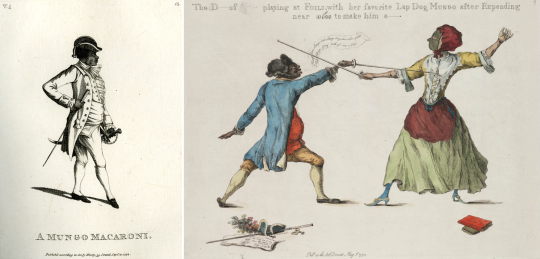
[Left: A Mungo Macaroni, print, c. 1772, by Matthew Darly, via The British Museum.
Right: The D------ of [...]-- playing at foils with her favorite lap dog Mungo after expending near £10000 to make him a----------*, print, c. 1773, by William Austin, via Yale Center for British Art.]
The expense of Stede’s wardrobe is a key part of the narrative. Stede has nice fancy luxurious things. Ed wants nice fancy luxurious things. Ed was born a poor brown boy and while he may be rich now he can never truly change his class. He could be as rich as Richard Cosway or Julius Soubise but to the gentry he will always be that poor brown boy.

Gender
As we have already seen in the tirade against men using umbrellas the macaroni was perceived as being of “the doubtful gender”. (The Morning Chronicle, 4 Oct, 1784)
The Natural History of a Macaroni writes that there “has within these few years past arrived from France and Italy a very strange animal, of the doubtful gender, in shape somewhat between a man and monkey,” that dresses “neither in the habit of a man or woman, but peculiar to itself”. The author states that “they are in no respect useful in this country”:
that the minister of the war department would give orders to have them enlisted for the service of America: we do not mean to put them on actual duty there. Alas! they are as harmless in the field, as they are in the chamber, but they may stand as faggots to cover the loss of real men.
(Walker’s Hibernian Magazine, July 1777, p458-9)
A “faggot” being “A man who is temporarily hired as a dummy soldier to make up the required number at a muster of troops, or on the roll of a company or regiment.” (see OED)

[The Masculine Gender & The Feminine Gender, etching with touches of watercolour, c. 1787, Attributed to Henry Kingsbury, via The Met.]
The macaroni wasn’t just considered effeminate because of the way they dressed but also because of their interests and the way walked and talked. Famous for playing fops and macaroni, the actor David Garrick did a lot to establish the character of the macaroni in the public mind. In his poem The Fribbleriad Garrick mocks the men who were offended by his performances asserting, perhaps accurately, that they were offended because it was them he mocked. He portrays a group of angry effeminate men meeting in order to seek revenge on him for his portrayal of them:
May we no more such misery know! Since Garrick made OUR SEX a shew; And gave us up to such rude laughter, That few, ’twas said, could hold their water: For He, that player, so mock’d our motions, Our dress, amusements, fancies, notions, So lisp’d our words, and minc’d our steps,
The macaroni had become more than simply an effeminate man, he had become a new sex. Something not quite man or woman. Something in-between. A new description of a macaroni asks the question:
Is it a man? ‘Tis hard to say - A woman then
- A moment pray -
So doubtful is the thing, that no man
Can say if ‘tis a man or woman:
Unknown as yet by sex or feature,
It moves - a mere amphibious creature.
(McNeil p169)
Sexuality
Much like today in the 18th century effeminacy was associated with homosexuality. Men who had sex with other men were known as mollies. A Classical Dictionary of the Vulgar Tongue (1785), defined a molly as “A Miss Molly; an effeminate fellow, a sodomite”. In the History of the London Clubs (1709), Ned Ward characterises mollies as follows:
There are a particular Gang of Wretches in Town, who call themselves Mollies, & are so far degenerated from all Masculine Deportment or Manly exercises that they rather fancy themselves Women, imitating all the little Vanities that Custom has reconcil’d to the Female sex, affecting to speak, walk, tattle, curtsy, cry, scold, & mimick all manner of Effeminacy.
“By the 1760′s,” explains Peter McNeil, “too much attention to fashion on the part of a man was read as evidence if a lack of interest in women”. (p152)
Macaroni were often portrayed as incapable or simply uninterested in sexual relations with women. This attitude is expressed by Mr. Bate in the following dialogue from The Vauxhall Affray; Or, the Macaronies Defeated:
Mr. Fitz-Gerall: I always though a fine woman was only made to be looked at.
Mr. Bate: Just sentiments of a macaroni. You judge of the fair sex as you do your own doubtful gender, which aims only to be looked at and admired.
Mr. Fitz-Gerall: I have as great a love for a fine woman as any man.
Mr. Bate: Psha! Lepus tute es et pulpamentum quæris?
Mr. Fitz-Gerall: What do you say, Parson?
Mr. Bate: I cry you mercy, Sir, I am talking Heathen Greek to you; in plain English I say, A macaroni you, and love a woman?
Mr. Fitz-Gerall: I love the ladies, for the ladies love me.
Mr Bate: Yes, as their panteen, their play-thing, their harmless bauble, to treat as you do them, merely to look at
While lack on interest in woman does not necessarily mean attraction to men, Matthew Darly takes the implication there in his 1771 set of macaroni caricatures which induces a print entitled Ganymede, a reference to Zeus’ male lover of the same name. Ganymede is believed to be a parody of Samuel Drybutter who had been arrested for attempted sodomy in January 1770. Darly also includes the character Ganymede in Ganymede & Jack-Catch. Jack-Catch is a reference to the infamous English executioner John Ketch. In the print Jack-Catch says, “Dammee Sammy you’r a sweat pretty creature & I long to have you at the end of my String.” Ganymede replies, “You don’t love me Jacky”. Jack-Catch is holding a noose with one hand and stroking Ganymede’s chin with the other. Jack-Catch is soberly dressed in typical 18th century menswear, while Ganymede’s dress is distinguished by his lace ruffles and styled wig. The print is not only suggesting that macaroni are sodomites but making a joke of the execution of them. The punishment for a sodomy at this time in England being death by hanging.

[Left: Ganymede, print, c. 1771, Matthew Darly, via The Met.
Right: Ganymede & Jack Catch, print, c. 1771, Matthew Darly, via The British Museum]
An anonymous letter to the Public Ledger (5 Aug, 1772) says blatantly what others had already implied. “The country is over-run with Catamites, with monsters of Captain Jones’s taste, or, to speak in a language witch all may understand, with MACCARONIES”. The writer warns macaroni who have “escaped detection” as sodomites and “therefore cannot fairly be charged” that they have not avoided suspicion:
Suspicion is got abroad-the carriage-the deportment-the dress-the effeminate squeak of the voice-the familiar loll upon each others shoulders-the gripe of the hand-the grinning in each others faces, to shew the whiteness of the teeth-in short, the manner altogether, and the figure so different from that of Manhood, these things conspire to create suspicion; Suspicion gives birth to watchful observation; and, from a strict observance of the Maccaroni Tribe, we very naturally conclude that to them we are indebted for the frequency of a crime which Modesty forbids me to name. Take warning, therefore, ye smirking group of Tiddy-dols: However secret you may be in your amours, yet in the end you cannot escape detection;
Bows on His Shoes
18th century shoes were typically buckled, laces and ribbons were simply unfashionable. As mentioned previously macaroni were distinguished by the size and decoration of the buckles. So are Stede’s bows simply ahistorical? Well there are references to 18th century men wearing laces and ribbons.
Towards the end of the 18th century laces started to come into fashion. Appeal from the Buckle Trade of London and Westminster, to the Royal Conductors of Fashion (1792) complained that despite how “tender and effeminate the appearance of Shoe Strings” the “custom of wearing them has prevailed.”
Perhaps the most intriguing reference is that of Commissioner Pierre Louis Foucault’s papers where he details the surveillance, investigation and entrapment of "pederasts” in Paris. It is important to note that the word “pederasty” was used synonymously with “sodomy” in the 18th century and did not denote age simply sex. An Universal Etymological English Dictionary (1726) defines “A pederast” as “a Buggerer” and “Pederasty” as “Buggery”.
Foucault and the men working with him identified particular clothing worn by men seeking sex with other men that he called the “pederastical uniform”. In Foucault’s papers men are described as being “attired in such a way as to be recognized by everyone as a pederast”, “clothed with all the distinctive marks of pederasty”, or simply “dressed like a pederast”. This “uniform” generally included “some combination of frock coat, large tie, round hat, small chignon, and bows on the shoes.” Jeffrey Merrick in his article on Foucault speculates that these men dressed this way to signal to each other. However when questioned by police they would understandably deny such a purpose, one man when questioned about his outfit responded that everyone “dresses as he sees fit”. (Jeffrey Merrick, Commissioner Foucault, Inspector Noël, and the “Pederasts” of Paris,1780-3)
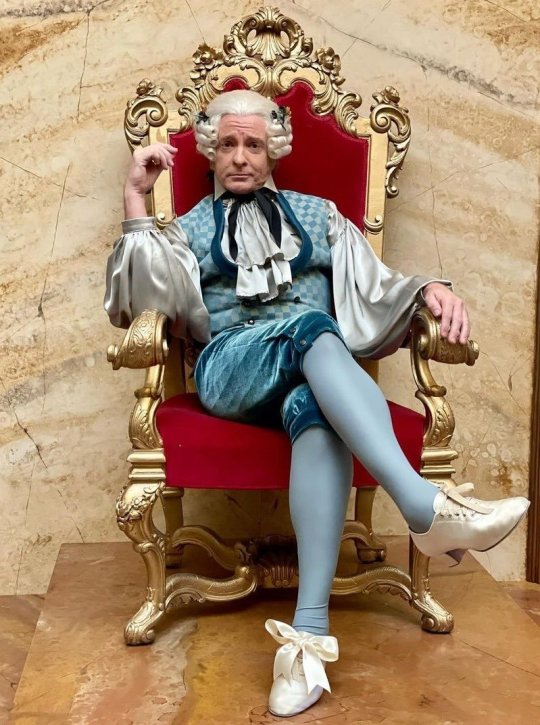
Conclusion
I’m not saying Stede is intended to be a macaroni. If that were the case they would have given him the iconic macaroni hairstyle. However the costuming team has clearly pulled from fashion trends that were associated with effeminacy and homosexuality. While OFMD is evidently wholly unconcerned with creating period accurate costumes the costumes are still clearly inspired by historical fashions. Perhaps the curtains really are just blue but maybe Stede wears bows on his shoes because he’s gay.
#I had way too much fun doing this#our flag means death#ofmd meta#stede bonnet#queer history#macaroni#historical fiction#fashion history
198 notes
·
View notes
Text
Dread by the Decade: The Tell-Tale Heart
👻 You can support me on Ko-Fi! ❤️

★★½
Plot: After years of abuse, a weaver kills his master, only to be wracked by guilt.
Review: Though successful in some ways, this film ultimately lacks the dread and desperation cultivated by its source material.

Source Material: The Tell-Tale Heart by Edgar Allan Poe Year: 1941 Genre: Psychological Horror Country: United States Language: English Runtime: 19 minutes 40 seconds

Director: Jules Dassin Writer: Doane R. Hoag Cinematographer: Paul C. Vogel Editor: Adrienne Fazan Composer: Sol Kaplan Cast: Joseph Schildkraut, Roman Bohnen, Oscar O'Shea, Will Wright

------
Story: 2/5 - The removal of the short story's most horrifying element—that the unhinged murderer kills an innocent, unsuspecting man for a senseless reason—hampers the film and makes it a bit generic.
Performances: 3/5 - Schildkraut does a solid job portraying an abused man pushed to the brink, and Bohnen is likewise decent as his cruel abuser.
Cinematography: 3.5/5 - Some nice use of lighting.

Editing: 3.5/5
Music: 3/5
Sets: 3/5 - Nothing special, but well-dressed enough.
Costumes, Hair, & Make-Up: 3/5 - Like all other elements of this film, the wardrobe is serviceable, but not terribly striking.
youtube
Trigger Warnings:
Mild violence
Abuse
#The Tell-Tale Heart (1941)#The Tell-Tale Heart#Jules Dassin#American#psychological horror#Dread by the Decade#review#1940s#Youtube
5 notes
·
View notes
Text
youtube
Come To The Stable 1949 (Comedy) Loretta Young & Celeste Holm
" Come to the Stable is a 1949 American comedy drama film that tells how two French religious sisters come to a small New England town and involve the townsfolk in helping them to build a children's hospital. It features Loretta Young, Celeste Holm, Hugh Marlowe, Elsa Lanchester, Thomas Gomez, Dooley Wilson and Regis Toomey. "The movie was based on a story by Clare Boothe Luce, and the screenplay was written by Oscar Millard and Sally Benson. It was directed by Henry Koster. It was nominated for Academy Awards for Best Actress in a Leading Role (Loretta Young), Best Actress in a Supporting Role (Celeste Holm and Elsa Lanchester), Best Art Direction-Set Decoration, Black-and-White (Lyle R. Wheeler, Joseph C. Wright, Thomas Little[disambiguation needed], and Paul S. Fox), Best Cinematography, Best Music, Song (Alfred Newman and Mack Gordon for "Through a Long and Sleepless Night") and Best Writing, Motion Picture Story.
"Plot Two nuns from a French convent arrive in a small Connecticut town with a plan to build a children's hospital. They enlist the help of several colorful characters in achieving their dream including a struggling artist, a popular songwriter, and a renowned racketeer.
Transcript
Follow along using the transcript."
9 notes
·
View notes
Text








Elizabeth Cole
American Girl: Historical Inspirations
1. Dorothy Quincy by John Singleton Copley, c. 1772
2. apron, Victoria and Albert Museum
3. Dress, circa 1765-1775, Museum of Fine Arts Boston
4. 1760-65, Los Angeles County Museum of Art
5. detail from Mr. and Mrs. Thomas Coltman by Joseph Wright, 1769-73, The National Gallery
6. Manteau Gown, 1775-1785, Musée des Arts Décoratifs
7. Maternity Gown, Kerry Taylor Auctions
8. Portrait of a Young Lady with a Fan, 18th Century
84 notes
·
View notes
Text
Interesting Papers for Week 25, 2024
Silencing CA1 pyramidal cells output reveals the role of feedback inhibition in hippocampal oscillations. Adaikkan, C., Joseph, J., Foustoukos, G., Wang, J., Polygalov, D., Boehringer, R., … McHugh, T. J. (2024). Nature Communications, 15, 2190.
A multi-demand operating system underlying diverse cognitive tasks. Cai, W., Taghia, J., & Menon, V. (2024). Nature Communications, 15, 2185.
A view-based decision mechanism for rewards in the primate amygdala. Grabenhorst, F., Ponce-Alvarez, A., Battaglia-Mayer, A., Deco, G., & Schultz, W. (2023). Neuron, 111(23), 3871-3884.e14.
Local and global predictors of synapse elimination during motor learning. Hedrick, N. G., Wright, W. J., & Komiyama, T. (2024). Science Advances, 10(11).
Laminar evoked responses in mouse somatosensory cortex suggest a special role for deep layers in cortical complexity. Hönigsperger, C., Storm, J. F., & Arena, A. (2024). European Journal of Neuroscience, 59(5), 752–770.
Synaptic wiring motifs in posterior parietal cortex support decision-making. Kuan, A. T., Bondanelli, G., Driscoll, L. N., Han, J., Kim, M., Hildebrand, D. G. C., … Lee, W.-C. A. (2024). Nature, 627(8003), 367–373.
Organization of reward and movement signals in the basal ganglia and cerebellum. Larry, N., Zur, G., & Joshua, M. (2024). Nature Communications, 15, 2119.
Autokinesis Reveals a Threshold for Perception of Visual Motion. Liu, Y., Tian, J., Martin-Gomez, A., Arshad, Q., Armand, M., & Kheradmand, A. (2024). Neuroscience, 543, 101–107.
Temporally organized representations of reward and risk in the human brain. Man, V., Cockburn, J., Flouty, O., Gander, P. E., Sawada, M., Kovach, C. K., … O’Doherty, J. P. (2024). Nature Communications, 15, 2162.
Neural timescales reflect behavioral demands in freely moving rhesus macaques. Manea, A. M. G., Maisson, D. J.-N., Voloh, B., Zilverstand, A., Hayden, B., & Zimmermann, J. (2024). Nature Communications, 15, 2151.
Changes in spatial self-consciousness elicit grid cell–like representation in the entorhinal cortex. Moon, H.-J., Albert, L., De Falco, E., Tasu, C., Gauthier, B., Park, H.-D., & Blanke, O. (2024). Proceedings of the National Academy of Sciences, 121(12), e2315758121.
Goal-seeking compresses neural codes for space in the human hippocampus and orbitofrontal cortex. Muhle-Karbe, P. S., Sheahan, H., Pezzulo, G., Spiers, H. J., Chien, S., Schuck, N. W., & Summerfield, C. (2023). Neuron, 111(23), 3885-3899.e6.
A persistent prefrontal reference frame across time and task rules. Muysers, H., Chen, H.-L., Hahn, J., Folschweiller, S., Sigurdsson, T., Sauer, J.-F., & Bartos, M. (2024). Nature Communications, 15, 2115.
Interactions between circuit architecture and plasticity in a closed-loop cerebellar system. Payne, H. L., Raymond, J. L., & Goldman, M. S. (2024). eLife, 13, e84770.
Functionally refined encoding of threat memory by distinct populations of basal forebrain cholinergic projection neurons. Rajebhosale, P., Ananth, M. R., Kim, R., Crouse, R., Jiang, L., López-Hernández, G., … Talmage, D. A. (2024). eLife, 13, e86581.
Functional architecture of dopamine neurons driving fear extinction learning. Salinas-Hernández, X. I., Zafiri, D., Sigurdsson, T., & Duvarci, S. (2023). Neuron, 111(23), 3854-3870.e5.
Neural attentional filters and behavioural outcome follow independent individual trajectories over the adult lifespan. Tune, S., & Obleser, J. (2024). eLife, 12, e92079.3.
Coordinated head direction representations in mouse anterodorsal thalamic nucleus and retrosplenial cortex. van der Goes, M.-S. H., Voigts, J., Newman, J. P., Toloza, E. H., Brown, N. J., Murugan, P., & Harnett, M. T. (2024). eLife, 13, e82952.
Specific rules for time and space of multisensory plasticity in the superior colliculus. Wang, L., Xin, H., Buren, Q., Zhang, Y., Han, Y., Ouyang, B., … Dong, C. (2024). Brain Research, 1828, 148774.
Structural constraints on the emergence of oscillations in multi-population neural networks. Zang, J., Liu, S., Helson, P., & Kumar, A. (2024). eLife, 12, e88777.3.
#neuroscience#science#research#brain science#scientific publications#cognitive science#neurobiology#cognition#psychophysics#neurons#neural computation#neural networks#computational neuroscience
6 notes
·
View notes
Text

MWW Artwork of the Day (6/6/24) Joseph Mallord William Turner (British, 1775-1851) Fishermen at Sea (c. 1796) Oil on canvas, 91.4 x 122.2 cm. The Tate Gallery, London
The first oil painting Turner exhibited at the Royal Academy, this is a moonlit scene in the tradition of Horace Vernet, Philip de Loutherbourg and Joseph Wright of Derby. These painters were largely responsible for fuelling the 18th-century vogue for nocturnal subjects. The sense of the overwhelming power of nature is a key theme of the Sublime. The potency of the moonlight contrasts with the delicate vulnerability of the flickering lantern, emphasising nature’s power over mankind and the fishermen’s fate in particular. The jagged silhouettes on the left are the treacherous rocks called ‘the Needles’ off the Isle of Wight.
5 notes
·
View notes
Photo
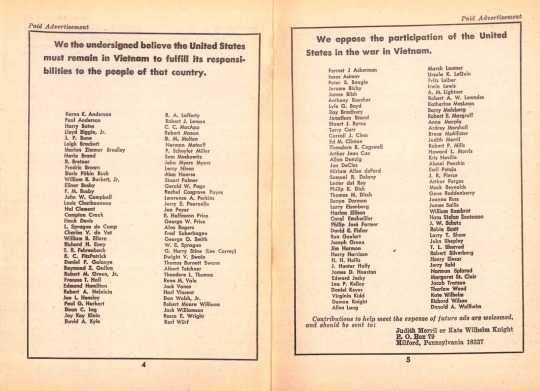
Vietnam War - Galaxy Science Fiction Magazine, June 1968
Sourced from: http://natsmusic.net/articles_galaxy_magazine_viet_nam_war.htm
Transcript Below
We the undersigned believe the United States must remain in Vietnam to fulfill its responsibilities to the people of that country.
Karen K. Anderson, Poul Anderson, Harry Bates, Lloyd Biggle Jr., J. F. Bone, Leigh Brackett, Marion Zimmer Bradley, Mario Brand, R. Bretnor, Frederic Brown, Doris Pitkin Buck, William R. Burkett Jr., Elinor Busby, F. M. Busby, John W. Campbell, Louis Charbonneau, Hal Clement, Compton Crook, Hank Davis, L. Sprague de Camp, Charles V. de Vet, William B. Ellern, Richard H. Eney, T. R. Fehrenbach, R. C. FitzPatrick, Daniel F. Galouye, Raymond Z. Gallun, Robert M. Green Jr., Frances T. Hall, Edmond Hamilton, Robert A. Heinlein, Joe L. Hensley, Paul G. Herkart, Dean C. Ing, Jay Kay Klein, David A. Kyle, R. A. Lafferty, Robert J. Leman, C. C. MacApp, Robert Mason, D. M. Melton, Norman Metcalf, P. Schuyler Miller, Sam Moskowitz, John Myers Myers, Larry Niven, Alan Nourse, Stuart Palmer, Gerald W. Page, Rachel Cosgrove Payes, Lawrence A. Perkins, Jerry E. Pournelle, Joe Poyer, E. Hoffmann Price, George W. Price, Alva Rogers, Fred Saberhagen, George O. Smith, W. E. Sprague, G. Harry Stine (Lee Correy), Dwight V. Swain, Thomas Burnett Swann, Albert Teichner, Theodore L. Thomas, Rena M. Vale, Jack Vance, Harl Vincent, Don Walsh Jr., Robert Moore Williams, Jack Williamson, Rosco E. Wright, Karl Würf.
We oppose the participation of the United States in the war in Vietnam.
Forrest J. Ackerman, Isaac Asimov, Peter S. Beagle, Jerome Bixby, James Blish, Anthony Boucher, Lyle G. Boyd, Ray Bradbury, Jonathan Brand, Stuart J. Byrne, Terry Carr, Carroll J. Clem, Ed M. Clinton, Theodore R. Cogswell, Arthur Jean Cox, Allan Danzig, Jon DeCles, Miriam Allen deFord, Samuel R. Delany, Lester del Rey, Philip K. Dick, Thomas M. Disch, Sonya Dorman, Larry Eisenberg, Harlan Ellison, Carol Emshwiller, Philip José Farmer, David E. Fisher, Ron Goulart, Joseph Green, Jim Harmon, Harry Harrison, H. H. Hollis, J. Hunter Holly, James D. Houston, Edward Jesby, Leo P. Kelley, Daniel Keyes, Virginia Kidd, Damon Knight, Allen Lang, March Laumer, Ursula K. LeGuin, Fritz Leiber, Irwin Lewis, A. M. Lightner, Robert A. W. Lowndes, Katherine MacLean, Barry Malzberg, Robert E. Margroff, Anne Marple, Ardrey Marshall, Bruce McAllister, Judith Merril, Robert P. Mills, Howard L. Morris, Kris Neville, Alexei Panshin, Emil Petaja, J. R. Pierce, Arthur Porges, Mack Reynolds, Gene Roddenberry, Joanna Russ, James Sallis, William Sambrot, Hans Stefan Santesson, J. W. Schutz, Robin Scott, Larry T. Shaw, John Shepley, T. L. Sherred, Robert Silverberg, Henry Slesar, Jerry Sohl, Norman Spinrad, Margaret St. Clair, Jacob Transue, Thurlow Weed, Kate Wilhelm, Richard Wilson, Donald A. Wollheim.
21 notes
·
View notes
Text
This is Thursday April 11th 2024 is for those victims that was gunned down and also for the Manchester Arena victims that was bombed down as well they aren't just rappers wrestlers kids or dreamers but they are angels sent back to heaven Ava Jordan Wood, Olivia Pratt Korbel, Saffie Rose Roussos, Pop Smoke, Young Dolph, Tupac Shakur and Christopher George Latore Wallace, Natalia Victoria Wallace, Shinzo Abe, Abraham Lincoln, Dr. Rev, Martin Luther King Jr., Secoriea Turner, Royta De'Marco Layfield Giles Jr., Davon McNeal, Dajore Wilson, Mekhi James, Judith and Maria Barsi, Janari A. Ricks, Carolyn Kay “Katy” Davis, Christiana Mae “Chrissy” Duarte, Shirley Virginia Ferrell Drouet, Stacee Ann Etcheber, Brisenia Ylianna Flores, Keri Lynn Galvan, Christian Riley Garcia, Angela Christine “Angie” Gomez, Jaime Taylor Guttenberg, Nicole Marie Hadley, Caitlin Millar Hammaren, Linda Sue Miller Hathorn, Aubrey Wright Hawkins, Demetrius C. “D” Hewlin, Rachael Elizabeth Hill, Emily Jane Hilscher, Dawn Alyson Lafferty Hochsprung, Anah Michelle Hodges, Winter Ashley Hodges, Kenzie Marie Houk, Lisa Rachelle Huff Huff, Cynthia Marie Graham Hurd, Caleb Curtis Jackson, Dwayne Clifford Jackson Jr., Honesty Faith Jackson, Jonah Curtis Jackson, Trinity Hope Jackson, Jessica Jeanette James, Veronica Lynn “Tina” Jefferson, SGT Kent Dean Kincaid, Lawrence Fobes “Larry” King, Kandy Janell Kirtland, Russell Dennis King Jr., Amy Michelle Kitchen, Carly Anne Buchholtz Kreibaum, Matthew Joseph La Porte VVETERAN, Cara Marie Loughran, Trayvon Benjamin Martin, Rhonda M. LeRocque, Rebecka Ann Carnes, Adriana “Adri” Dukić, Cassie Bernall, Ross Abdallah Alameddine, Arielle Anderson, Lucero Alcaraz, PnB Rock, Nipsey Hussle, Takeoff, Dayvon Daquan Bennett, Jahseh Dwayne Onfroy, Janette Becraft, Eddie Graham, Shannon Claire Spruill, Dino Bravo, Lena Marie Nunez-Anaya, Sincere Gaston, Rebecka Ann Carnes, Annabelle Renee Pomeroy, Darius “DJ” Dugas II, Jason Leonard Abbott, Hannah Lassette Magiera Ahlers, Tammy Jo Alexander, Alyssa Miriam Alhadeff, Teresa Carol Allen, Cory Adam Andrewski, Thomas Aquinas Ashton, Charlotte Helen “Char” Bacon, Daniel Gerard “Danny” Barden, Carrie Rae Barnette, and more
3 notes
·
View notes
Text

‘Studies of a Classical Bust’ by Joseph Wright of Derby, c. 1774-1775.
15 notes
·
View notes
Text
THE 236 GREATEST PERSONALITIES IN THE ENTIRE KNOWN HISTORY/COLLECTIVE CONSCIOUSNESS OF THIS WORLD! (@INDIES)
i.e. THE 236 GREATEST PERSONALITIES IN WORLD HISTORY! (@INDIES)
Rajesh Khanna
Lionel Messi
Leonardo Da Vinci
Muhammad Ali
Joan of Arc
William Shakespeare
Vincent Van Gogh
Online Indie
J. K. Rowling
David Lean
Nadia Comaneci
Diego Maradona
Wolfgang Amadeus Mozart
Meena Kumari
Julius Caesar
Harrison Ford
Ludwig Van Beethoven
William W. Cargill
Fritz Hoffmann-La Roche
Samuel Curtis Johnson
Sam Walton
John D. Rockefeller
Andrew Carnegie
Roy Thomson
Tim Berners-Lee
Marie Curie
James J. Hill
Cornelius Vanderbilt
Roman Polanski
Samuel Slater
J. P. Morgan
Cary Grant
Dmitri Mendeleev
John Harvard
Alain Delon
Ramakrishna Paramhansa (Official God)
The Lumiere Brothers, Auguste & Louis
Carl Friedrich Benz
Michelangelo
Maharishi Mahesh Yogi
Ramana Maharishi
Mark Twain
Swami Sri Yukteswar Giri
Bruce Lee
Bhagwan Krishna (Official God)
Charlemagne
Rene Descartes
John F. Kennedy
Bhagwan Ganesha (Official God)
Walt Disney
Albert Einstein
Nikola Tesla
Alfred Hitchcock
Pythagoras
William Randolph Hearst
Cosimo de’ Medici
Johann Sebastian Bach
Alec Guinness
Nostradamus
Christopher Plummer
Archimedes
Jackie Chan
Guru Dutt
Amma Karunamayi/ Mata Parvati (Official God)
Peter Sellers
Gerard Depardieu
Joseph Safra
Robert Morris
Sean Connery
Petr Kellner
Aristotle Onassis
Usain Bolt
Jack Welch
Alfredo di Stefano
Elizabeth Taylor
Michael Jordan
Paul Muni
Steven Spielberg
Louis Pasteur
Ingrid Bergman
Norma Shearer
Dr. B. R. Ambedkar
Ayn Rand
Jesus Christ (Official God)
Luciano Pavarotti
Alain Resnais
Frank Sinatra
Allah (Official God)
Richard Nixon
Charlie Chaplin
Thomas Alva Edison
Alexander Graham Bell
Wright Brothers
Arjun (of Bhagwan Krishna’s Gita)
Jim Simons
George Lucas
Swami Sri Lahiri Mahasaya
Carl Lewis
Brett Favre
Helen Keller
Bernard Mannes Baruch
Buddha (Official God)
Hugh Grant
K. L. Saigal
Roger Federer
Rash Behari Bose
Tiger Woods
William Blake
Jesse Owens
Claude Miller
Bernardo Bertolucci
Subhash Chandra Bose
Satyajit Ray
Hippocrates
Chiang Kai-Shek
John Logie Baird
Geeta Dutt
Raphael (painter)
Bhagwan Shiva (Official God)
Radha (Ancient Krishna devotee)
George Orwell
Jorge Paulo Lemann
Catherine Deneuve
Pierre-Auguste Renoir
Bill Gates
Bhagwan Ram (Official God)
Michael Phelps
Michael Faraday
Audrey Hepburn
Dalai Lama
Grace Kelly
Mikhail Gorbachev
Vladimir Putin
Galileo Galilei
Gary Cooper
Roger Moore
John Huston
Blaise Pascal
Humphrey Bogart
Rudyard Kipling
Samuel Morse
Wayne Gretzky
Yogi Berra
Barry Levinson
Patrice Chereau (director)
Jerry Lewis
Louis Daguerre
James Watt
Henri Rousseau
Nikita Krushchev
Jack Dorsey
Dev Anand
Elia Kazan
Alexander Fleming
David Selznick
Frank Marshall
Viswanathan Anand
Major Dhyan Chand
Swami Vivekananda
Felix Rohatyn
Sam Spiegel
Anand Bakshi
Victor Hugo
Bhagwan Sri Sathya Sai Baba (Official God)
Steve Jobs
Srinivasa Ramanujam
Lord Hanuman
Stanley Kubrick
Giotto
Voltaire
Diego Velazquez
Ernest Hemingway
Francis Ford Coppola
Michael Douglas
Kirk Douglas
Mario Lemieux
Kishore Kumar
James Stewart
Douglas Fairbanks
Confucius
Babe Ruth
Raj Kapoor
Titian aka Tiziano Vecelli
El Greco
Francisco de Goya
Jim Carrey
Mohammad Rafi
Steffi Graf
Pele
Gustave Courbet
Rani Laxmibai of Jhansi
Milos Forman
Steve Wozniak
Georgia O’ Keeffe
Mala Sinha
Aryabhatta
Magic Johnson
Patanjali
Leo Tolstoy
Tansen
Henry Fonda
Albrecht Durer
Benazir Bhutto
Cal Ripken Jr
Samuel Goldwyn
Mumtaz (actress)
Panini
Nicolaus Copernicus
Pablo Picasso
George Clooney
Olivia de Havilland
Prem Chand
Imran Khan
Pete Sampras
Ratan Tata
Meerabai (16th c. Krishna devotee)
Queen Elizabeth II
Pope John Paul II
James Cameron
Jack Ma
Warren Buffett
Romy Schneider
C. V. Raman
Aung San Suu Kyi
Benjamin Netanyahu
Frank Capra
Michael Schumacher
Steve Forbes
Paramhansa Yogananda
Tom Hanks
Kamal Amrohi
Hans Holbein
Shammi Kapoor
Gerardus Mercator
Edith Piaf
Bhagwan Shirdi Sai Baba (Official God)
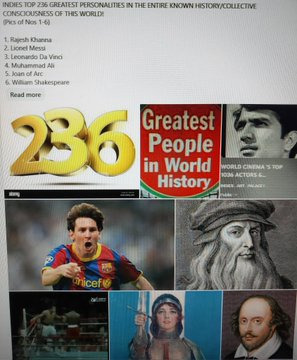


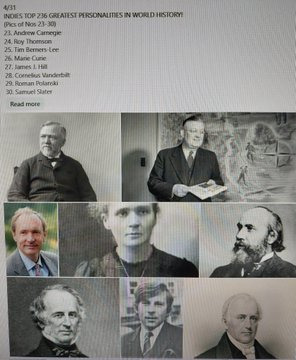
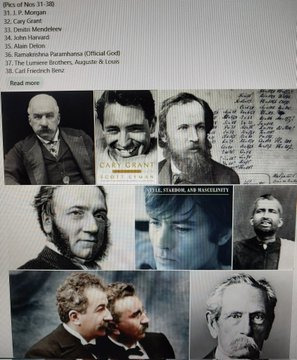
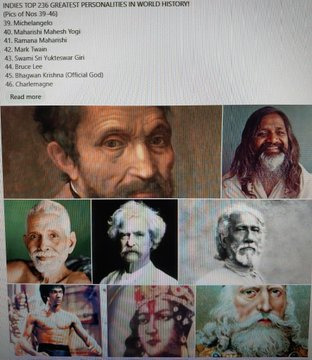
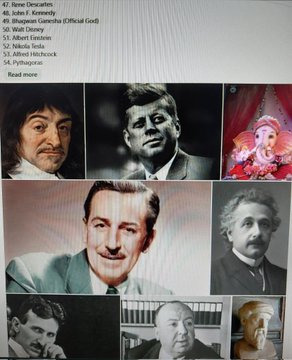

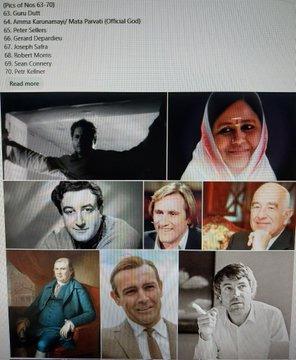



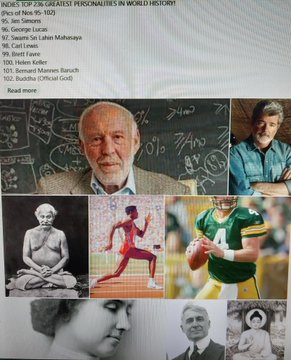
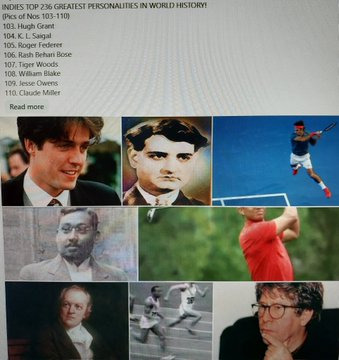
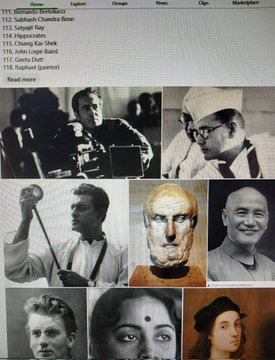

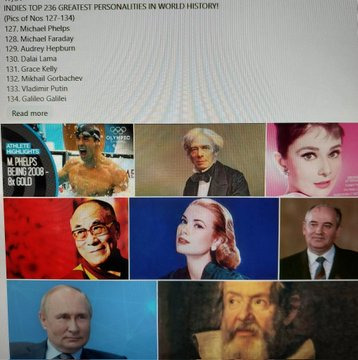

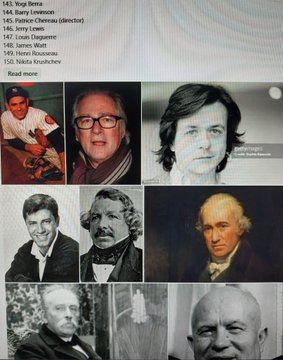
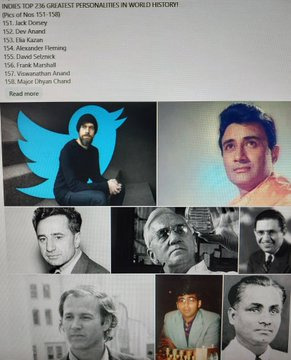
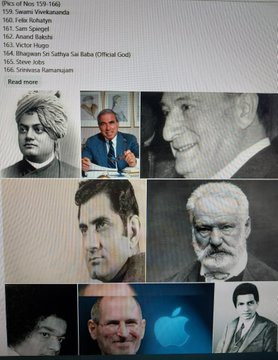
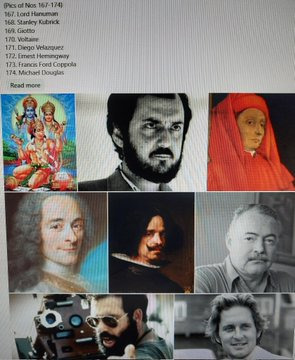
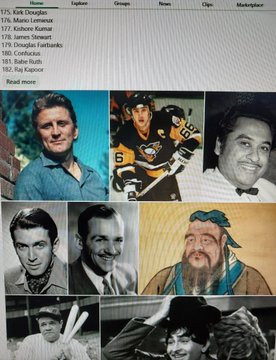
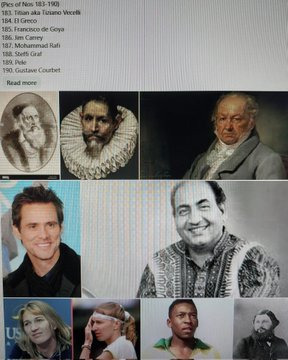
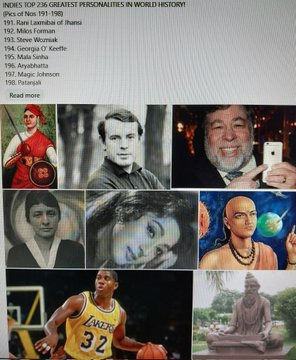
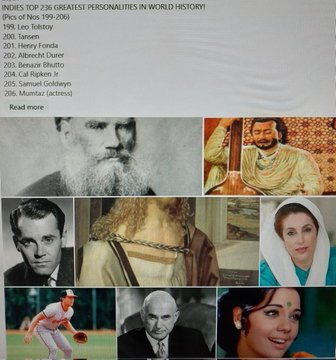

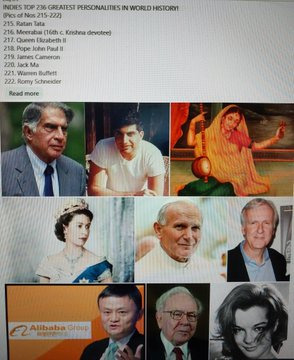

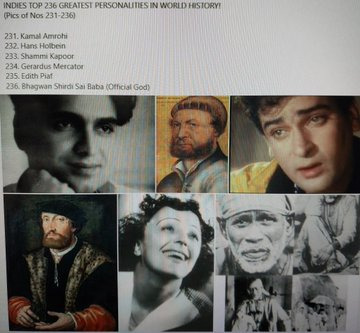
3 notes
·
View notes
Text
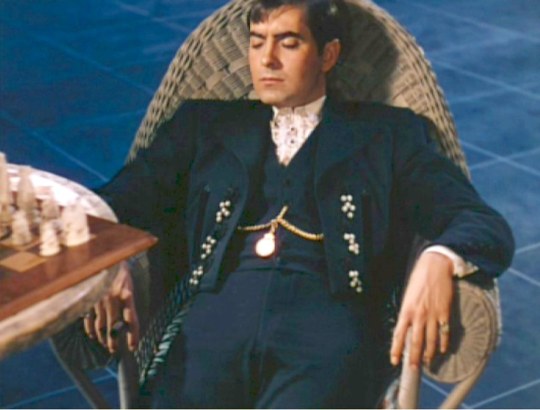
Tyrone Power in Blood and Sand (Rouben Mamoulian, 1941)
Cast: Tyrone Power, Linda Darnell, Rita Hayworth, Alla Nazimova, Anthony Quinn, J. Carrol Naish, Lynn Bari, John Carradine, Laird Cregar. Screenplay: Jo Swerling, based on a novel by Vicente Blasco Ibáñez. Cinematography: Ernest Palmer, Ray Rennehan. Art direction: Richard Day, Joseph C. Wright. Film editing: Robert Bischoff. Music: Arnold Newman.
Vicente Blasco Ibáñez's novels aren't read much anymore, but they were a fertile source for screenwriters in the silent era, providing two vehicles for Rudolph Valentino, Blood and Sand (Fred Niblo, 1922) and The Four Horsemen of the Apocalypse (Rex Ingram, 1921), and two for Greta Garbo, Torrent (Monta Bell, 1926) and The Temptress (Niblo, 1926). It was probably the Valentino connection that led producer and studio head Darryl F. Zanuck to revive Blasco's old warhorse Blood and Sand as a vehicle for Twentieth Century Fox's biggest male star, Tyrone Power. He plays Juan Gallardo, the son of a bullfighter who was killed in the ring. The movie follows Juan's rise and fall, as he becomes the greatest matador in Spain, but finds love and glory too much to handle. It's genuine cornball stuff, with the usual characters: his sweet and devoted wife, Carmen (Linda Darnell); the temptress Doña Sol (Rita Hayworth), who steals him away from Carmen; and the devoted mother (Alla Nazimova) who prays that he'll be gored in the ring just bad enough to get him out of the game that killed his father. Darnell's is a thankless role, and it's not made any better by the decision to include a scene in which Carmen prays to the Virgin and we hear both her prayer and the Virgin's response to it in voiceover. Hayworth is sensational, however, never better than in a scene in which she dances with Manolo (Anthony Quinn), a friend of Juan's who has set out on his own to become a rival bullfighter. The Technicolor cinematography won an Oscar, and some of the credit goes to director Rouben Mamoulian, who wanted to evoke the palette of Spanish painters like Goya and Velázquez. Mamoulian has to be faulted, however, for the thudding obviousness of the death scene of Nacional (John Carradine), one of Juan's friends, who expires with his arms stretched out in a pose that recalls the crucifixes often seen in the film. The bullfight scenes, shot in Mexico, were supervised by Budd Boetticher, who had done some bullfighting there. They are, fortunately for those of us who find the sport repellent, kept to a minimum -- there's more sand than blood to be seen.
2 notes
·
View notes
Text
Birthdays 9.4
Beer Birthdays
Samuel Simon Loeb (1862)
William Hamm, Jr. (1893)
Ken Weaver (1983)
Five Favorite Birthdays
Anton Bruckner; Austrian composer (1824)
Whitney Cummings; comedian (1982)
Candy Loving; Playboy playmate 1/79 (1956)
Darius Milhaud; French composer (1892)
Ione Skye; English-American actress (1971)
Famous Birthdays
Joan Aiken; English author (1924)
Al-Biruni; Persian physician and polymath (973)
Carl Heinrich Biber; Austrian composer (1681)
Janet Biehl; philosopher (1953)
Daniel Burnham; architect (1846)
Martin Chambers; English drummer and singer (1951)
Craig Claiborne; journalist, author (1920)
Darryl Cotton; Australian singer-songwriter and guitarist (1949)
Francois Rene de Chateaubriand; French writer (1776)
Max Delbrück; German-American biophysicist (1906)
Edward Dmytryk; film director (1908)
Gary Duncan; rock guitarist (1946)
Danny Gatton; guitarist (1945)
Mitzi Gaynor; actor, dancer (1931)
Clive Granger, Welsh-American economist (1934)
George William Gray, British chemist, creator of liquid crystals (1926)
Max Greenfield; actor (1980)
Kevin Harrington; Australian actor (1959)
Paul Harvey; radio journalist (1918)
Jacqueline Hewitt; astrophysicist and astronomer (1958)
Syd Hoff; author and illustrator (1912)
Constantijn Huygens; Dutch poet and composer (1596)
Beyoncé Knowles; pop singer (1981)
Lewis Howard Latimer; inventor (1848)
Alexander Liberman, Russian-American artist (1912)
Dave Liebman; saxophonist (1946)
Donald McKay; shipbuilder (1810)
Kyle Mooney; comedian (1984)
Albert Joseph Moore; English artist (1841)
Stanford Moore; biochemist (1913)
Howard Morris; comedian (1919)
Gene Parsons; singer-songwriter, guitarist, and banjo player (1944)
George Percy; English explorer (1580)
Mike Piazza; New York Mets C (1968)
Drew Pinsky; radio and television host (1958)
Mary Renault; English writer (1905)
Oskar Schlemmer; German artist (1888)
Hanna Schwamborn; German actress (1992)
Jan Švankmajer; Czech filmmaker (1934)
Kim Thayil; guitarist and songwriter (1960)
Tom Watson; golfer (1949)
Damon Wayans; actor, comedian (1960)
Dallas Willard; philosopher (1935)
Gerald Wilson; trumpet player (1918)
Richard Wright; writer (1908)
Shinya Yamanaka; Japanese biologist (1962)
Dick York; actor (1928)
Bobby Jarzombek; drummer (1963)
2 notes
·
View notes
Text
A Philosopher Lecturing on the Orrery (1766)
Or its full title: A Philosopher giving that Lecture on the Orrery in which a lamp is put in place of the Sun by Joseph Wright

The Orrery [painting], caused a greater stir, as it replaced the Classical subject at the centre of the scene with one of a scientific nature. Wright's depiction of the awe produced by scientific "miracles" marked a break with previous traditions in which the artistic depiction of such wonder was reserved for religious events
The orrery depicted in the image is a type of flat larger orrery, very similar to the “Grand” orrery made by George Adams in the 1750’s that resides at the Whipple Museum



To the people of the 18th century, these objects would have been used to convey the relatively new mechanistic explanations of the movement of the planets, but also inspired awe at our precarious position in this 'clockwork universe'. This is clearly expressed in the well-known painting by Joseph Wright of Derby, c.1766, of a philosopher giving a lecture on the orrery. The painting portrays a family group held in fascination by the wonders of the Solar System as explained by the philosopher with the aid of an orrery.
8 notes
·
View notes